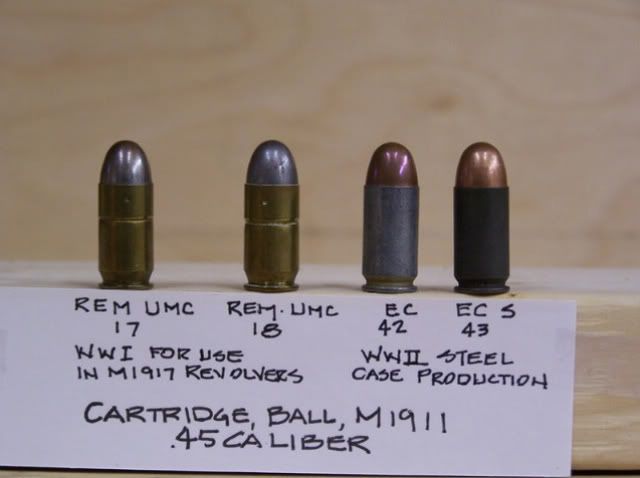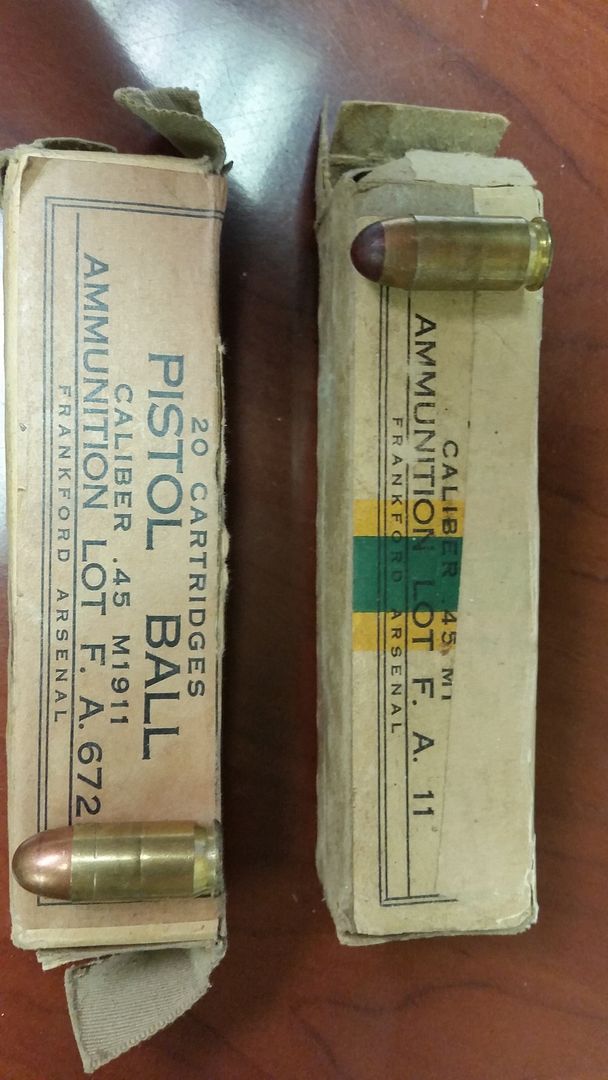Hi, Mike,
The lot number was not some kind of book keeping exercise, it was primarily for quality control purposes. If cartridges gave problems in the field, the lot number allowed Army Ordnance to determine exactly what kind of powder, primer, case, bullet, etc. had been used and track the problem to its source. For that reason, a change in the lot number was usually made because there was a change in a component, such as a change in the type/make of powder used. (Lot numbers are used by commercial ammunition companies today for the same purpose.) So a lot number did not cut off at an arbitrary date, like the first of the year.
One list I have shows (in part) FA production of .45 Ball/Match as follows:
Lots 290-304 (1926-1927)
Lots 305-369 (1927-1928)
Lots 370-399 (1928-1929)
Lots 400-410 (1929-1930)...
Lot 499 (1932)
Lots 500-605 (1933-1936)...
Lots 677-930 (1939-1941)
As to quantities, National Match/Ball Lots 201-245 (1919) ran 2,000,000 rounds; Lots 373 and 374 (1929) ran 1,250,000 rounds; Lots 431 and 432 (1931) ran 1,016,000 rounds. Single lots ran from 250,000 to over 600,000 rounds. (At that time, NM and regular ball were combined in FA production; there was no special NM headstamp.)
Jim


